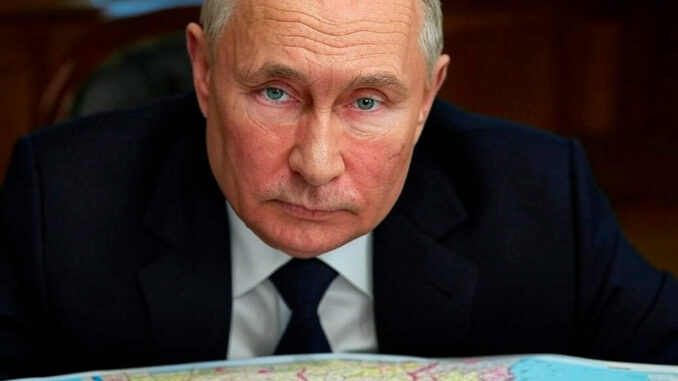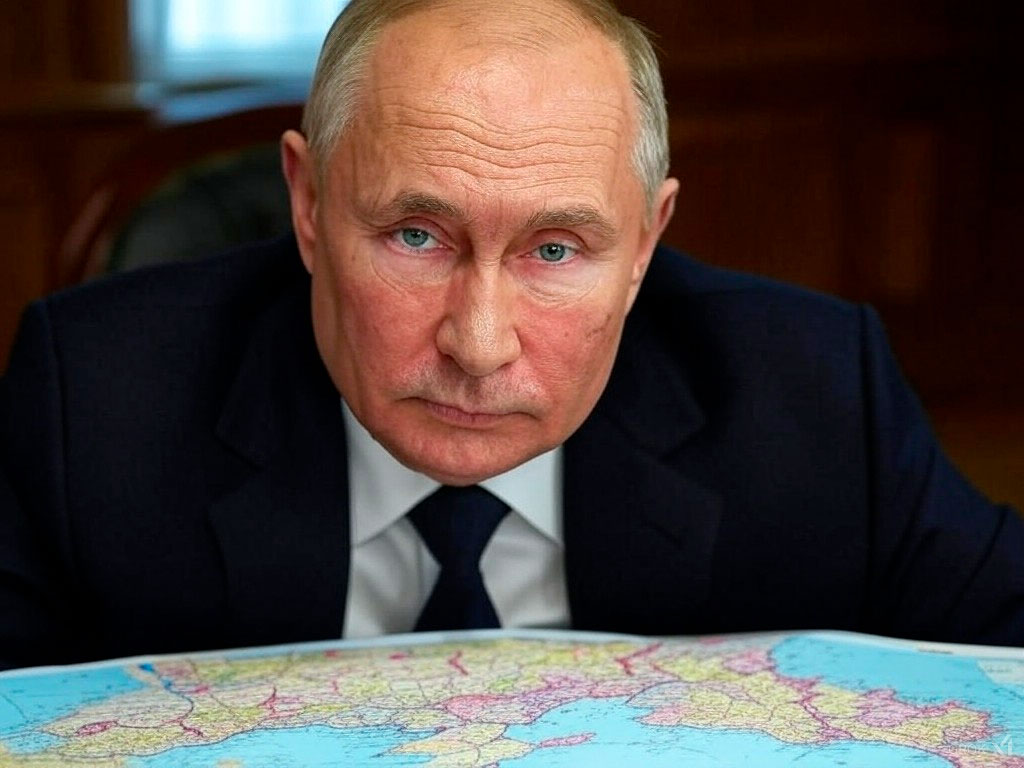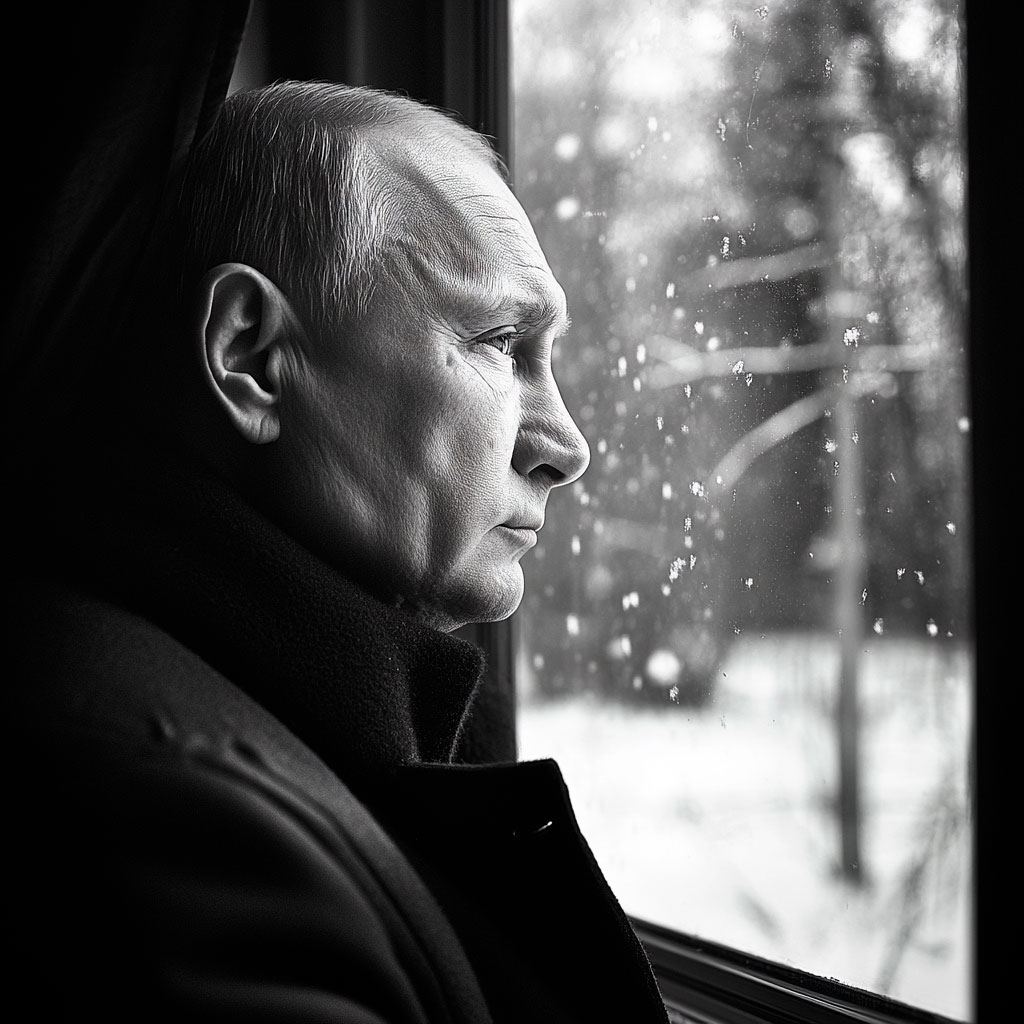
Vladimir Putin aims to restore Russian influence by absorbing Ukraine and claiming territory in Poland and Romania, despite the military challenges and major geopolitical implications.
Since the collapse of the Soviet Union in 1991, Vladimir Putin has regularly expressed his regret at the dissolution and his ambition to restore Russian influence over the former Soviet territories. The invasion of Ukraine in 2022 is part of this strategy, with the aim of absorbing Ukraine and assimilating its population by suppressing its culture. Plans also exist to claim territory in Poland and Romania, although these countries are members of NATO, making such expansion highly risky. However, after three years of conflict, the Russian army is weakened, with over 500,000 soldiers killed or wounded, and faces growing logistical and financial challenges. Despite these obstacles, Putin remains determined to pursue his vision of a restored Russia.
The ambition to restore Russian influence
Vladimir Putin has frequently expressed his regret at the dissolution of the Soviet Union in 1991, calling it a “major geopolitical catastrophe”. His declared aim is to restore Russian influence in the former Soviet territories, starting with Ukraine. This ambition has manifested itself in the annexation of Crimea in 2014 and the invasion of Ukraine in 2022. Putin plans to absorb Ukraine by integrating its regions into existing Russian provinces, while eradicating Ukrainian culture to ensure complete assimilation. This strategy includes the forced displacement of Ukrainian civilians to different parts of Russia and the repopulation of Ukrainian areas by Russian citizens, a method designed to Russify these territories over several generations.
Polish and Romanian targets
Beyond Ukraine, Russia has expressed territorial claims to parts of Poland and Romania, based on historical arguments that these regions once belonged to Russia. However, these ambitions come up against a major obstacle: Poland and Romania are members of the North Atlantic Treaty Organization (NATO). Founded in 1949, NATO is a military alliance which stipulates that an attack against one of its members is considered an attack against all. Russian aggression against these countries would therefore trigger a collective response from NATO, which accounts for around 50% of the world’s gross domestic product and almost half the world’s military power. So far, Russia has avoided any direct confrontation with NATO, aware of the suicidal risks such action would entail.

The weakening of the Russian army
Three years after the start of the invasion of Ukraine, the Russian army is facing a critical situation. Estimates suggest that over 500,000 Russian soldiers have been killed or wounded, leading to a significant drop in morale, an increase in desertions and spontaneous surrenders to Ukrainian forces. To compensate for these losses, Russia has sought to bolster its forces by recruiting foreign soldiers. For example, an agreement was reached with North Korea to deploy 12,000 North Korean troops in Ukraine. However, these troops have suffered heavy casualties, and Russia is struggling to finance such initiatives due to international economic sanctions hampering its economy.
The motivations behind the invasion of Ukraine
Several factors motivated Russia’s invasion of Ukraine in 2022. One of the most important was Putin’s desire to prevent Ukraine from moving closer to NATO and the European Union (EU). Ukraine’s membership of NATO would have placed a Western military alliance on Russia’s doorstep, which Moscow sees as a direct threat to its national security. Moreover, Ukraine’s integration into the EU would have reduced Kiev’s economic dependence on Moscow, by directing its trade towards European countries and the United States. Historically, Russia considers Ukraine to be an integral part of its territory, a view that ignores the fact that Ukraine has been internationally recognized as a sovereign state since the collapse of the Soviet Union.
The special case of Crimea
Crimea occupies a unique place in the conflict between Russia and Ukraine. Annexed by Russia in 2014, this peninsula has strategic importance due to its geographical position and the presence of the Sevastopol naval base, home to Russia’s Black Sea fleet. Following the annexation, Ukraine attempted to regain control of Crimea, notably by cutting off the region’s freshwater supply. This situation has exacerbated tensions between the two countries, complicating peace efforts. The majority of Crimeans support Russia in the current conflict, which contrasts with the general feeling in other Ukrainian regions, which strongly oppose Russian influence.

Challenges to realizing Putin’s ambitions
Despite his determination, Putin faces several major challenges that limit the realization of his expansionist ambitions. Among them, the depletion of human and military resources, international economic sanctions, and resistance from neighboring countries play a central role.
A shortage of soldiers and equipment
The Russian army is suffering considerable losses, with over 500,000 soldiers killed or wounded since the start of the conflict in 2022. This situation has led to a shortage of qualified fighters, forcing Moscow to resort to forced mobilizations, as well as the recruitment of mercenaries and foreign soldiers. The agreement signed with North Korea to send 12,000 North Korean soldiers to the front illustrates this difficulty. However, the operational life of these units is limited by a high rate of casualties, injuries and desertions.
In addition, Russian military equipment is suffering accelerated wear and tear. The armed forces have lost more than 3,000 battle tanks, as well as thousands of armored vehicles and artillery pieces. Faced with this haemorrhage, Russia is struggling to produce and replace its military equipment at a sufficient rate. Stocks of high-precision guided missiles are also affected, limiting long-range strikes.
Economic sanctions: a brake on the war effort
The sanctions imposed by the United States, the European Union and other Western allies since 2014 were stepped up after the 2022 invasion. They mainly target the energy sector, financial institutions and exports of sensitive technologies. Access to semiconductors, advanced electronic components and machine tools is severely restricted, hampering the production of modern armaments.
The Russian economy, largely dependent on oil and gas revenues, is facing a decline in exports to Europe. Despite the development of new agreements with China, India and other partners, Russia sells its oil at a reduced price, around 25% below the international market price. In addition, logistical difficulties linked to the remoteness of Asian markets complicate the export of raw materials.
Russia’s sovereign wealth fund, which was used to finance the war effort, is gradually dwindling. Experts estimate that within three to five years, Russia could find itself in a critical budgetary situation, unable to maintain its military spending at current levels.
Resistance from former Soviet states
While Belarus remains Moscow’s only stable ally, the other former Soviet states reject any attempt to return to Russian influence. The Baltic states (Estonia, Latvia, Lithuania), Georgia and Moldavia have strengthened their cooperation with NATO and the European Union to deter Russian aggression.
The countries of Central Asia, traditionally under Russian influence, are also distancing themselves. Kazakhstan, Uzbekistan and Turkmenistan are developing closer economic ties with China and Turkey. Kazakh President Kassym-Jomart Tokayev has even publicly stated that he will not recognize Russia’s annexation of Ukrainian territories.
Russia’s diplomatic isolation is also reflected in its exclusion from several international institutions and growing mistrust of its neighbors.
Outlook: can Putin continue his project?
Despite a difficult military and economic situation, Vladimir Putin does not seem ready to give up his ambitions. His official discourse continues to assert that Russia will go all the way in Ukraine and defend its strategic interests against the West.
However, financial, military and diplomatic constraints limit its capacity for action. In the long term, the survival of the Russian regime will depend on its ability to maintain internal control, mobilize new resources, and manage a population increasingly affected by sanctions and loss of life.
The future of Putin’s expansionist project remains uncertain. If Russia succeeds in stabilizing its position in Ukraine, it could try to put pressure on other territories. But if the economy continues to weaken and military losses mount, Moscow may be forced to scale back its ambitions.
War Wings Daily is an independant magazine.